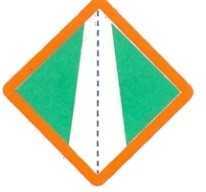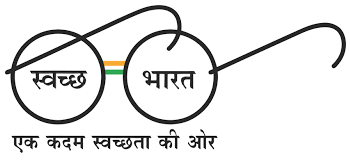- About Us
- PMGSY Guidelines
- Documents
- Operations Manual
- Grameen Sampark
- Core Network
- Standard Bidding Document
- Accounting & Audit Manuals
- Quality Assurance Handbook For Rural Roads Volume-I
- Office Manual
- Quality Assurance Handbook for Rural Roads Volume-II
- Handbook on Maintenance of Rural Roads In India
- Maintenance of Rural Roads: Guidance Note for States
- Annual Action Plan
- Procurement And Contract Management Manual
- Internship Scheme of UPRRDA
- Technical Documents
- Advertisements / Circulars
- Maintenance
- eMARG

- Rural Roads Maintenance Policies Of States
- Brochures on Rural Roads Maintenance
- Training Modules on Rural Roads Maintenance
- Impact Assessment Study of Improved Rural Roads Maintenance
- Strengthening the Capacity of Panchayati Raj Institutions – Managing Maintenance of Rural Roads
- eMARG
- Quality
- Guidelines on action to be taken on the Reports of the National Quality Monitors
- Empanelment of SQM's under UPRRDA
- Guidelines on Quality Assurance and Control Mechanism
- Guidelines on action to be taken on the Reports of the SQM's
- Guidelines on performance evaluation of National Quality Monitors
- Guidelines for Performance Evaluation of SQM
- SQM Inspection format- Maintenance works
- SQM Guidelines and Format
- Checklist For visit of area officers
- SQM Inspection Report Format
- De-empanelment of State Quality Monitors (SQMs)
- List of SQM’s (State Quality Monitors)
- List of SQC’s
- List of SQM Emeritus
- Training/Meeting
- iGOT Presentations

- 1. Advance Programme-Planning Design _Construction of Long Span Bridges-(Batch I)-22

- Prof M R Madav-Advanced Concept in the Geotechnical
- Pro MR Madav-Considerations in Design of BridgesN
- Shri Arvind Kumar Jaiswal-Seismic Effects on Performance of Long Span Bridges(1)
- Shri S Sai BABA-Sustainable design of long span Bridge
- Shri P G Venkat Ram Bridge Construction method and the failures Associated Method and the failures associated with them
- Sri P G Venkat Ram - Quality control measures that can prevent Bridge failures
- Shri S Sai Baba - Innovative launching
- 2. CONSTRUCTION AND QUALITY CONTROL OF FLEXIBLE AND RIGID PAVEMENTS

- L01- CSRK_PMGSY_T2022P3_QAQ 2122030341
- L02-Construction and Quality control of Subgrade and Granular layers
- L03- PMGSY_QC_55_03032022
- L04-GRK_Testing Cement Cement Concrete
- L05-PMGSY Soil properties
- L06- PMGSY_SS_Roughness_04032022
- L07-VR
- L08_VC_LTUB_4MAR2022_1
- L09-VR
- L10- PMGSY_NDT_SS_05032022
- L11_VC_LTMB_5MAR2022
- L12_VC_MMBMD_5MAR2022
- 3. GIS Curriculum for UPRRDA

- 4. New Technologies used in UPRRDA Roads

- FDR
- Lecture 0 Introduction of New Technologies
- Lecture 1-White topping. Short Panel Concrete Pavements and Cell filled concrete pavements
- Lecture 2-Roller compacted concrete pavements and Interlocking concrete block pavements
- Lecture 3- Utilization of waste plastic in Low volume Roads
- Lecture 4-Stabilization Methods for Low Volume Roads
- Lecture 5- Mord Specification for Low Volume Road
- Lecture 6- Design of Flexible Pavements for LVR Reinforced with Geosynthetics
- Lecture 7-Surface Dressing
- Lecture 8-Use of Geosynthetics in Low Volume Roads
- Lecture 9- USE OF MARGINAL MATERIALS IN LOW VOLUME ROADS
- 5. Pavement Design Construction and Maintenance

- 6. Preparation of DPR
- 7. Procurement of services
- 8. Road Safety Audit

- 1. Advance Programme-Planning Design _Construction of Long Span Bridges-(Batch I)-22
- Training Programmes
- Training Modules
- Training Institutions
- List of Trained Engineers & Contractor Staff

- Schedule of Training
- Login And Participation
- List of Certified Road Saftey Auditors
- Meeting
- iGOT Presentations
- Resource Center
- Photo Gallery
- External Links
Functions and Responsibilities (State Technical Agencies)
State Technical Agencies are envisaged as catalyzing agents in the State Level rural road programme, in order to improve the management and execution at the field level. Accordingly their functions include :
Verification of the District Rural Roads Plan prepared by the District Programme Implementation Unit
The verification will include
- Checking of correctness of existing links
- Checking of new proposed links in terms of the Road Index parameters laid down by the District Panchayat
- Ensuring that all necessary coding and indexing has been done to enable extraction of the Core Network
The State Technical Agency will, after finalisation of the Core Network by the District Panchayats, conduct a 100% review (suitably phased) in consultation with the DPIUs in order to help locate deficiencies, if any, in the Core Network with the objective of achieving a standard suitable for a GIS application.
The scrutiny by STAs of project reports shall be a thorough and detailed one in order to ensure that geometric and physical design is appropriate and economic, that the specifications are adequate and based on site conditions, that the estimation of quantities is accurate and reasonable.PMGSY roads are to be of the highest quality and it is the STAs that will have to provide the new inputs into the system to ensure the paradigm shift in terms of proper designing of roads for excellence with economy.
As such STAs while scrutinizing DPRs must
- Ensure that mere time constraint does not interfere with proper scrutiny. They should liaise with DPIUs to ensure proper phasing out of the process.
- Ensure that each DPR is made on the basis of thorough field investigation. If necessary additional data may be asked for.
- Check that the basic parameters viz, traffic and CBR are properly estimated.
- Determine that the design is really appropriate and there is not overdesigning.
- Investigate that all possible economies on use of materials, including soil stabilization measures, use of alternative material like fly ash/ industrial waste etc have been fully explored and use appropriately wherever possible.
If these interventionist or activist measures are properly and sincerely adopted by STA after seeking the cooperation of DPIUs, the STAs will be doing a real service to the road sector and the nation, since more good roads can be built with same outlay.
The District Programme Implementation Unit (DPIU), if required may take the advise of the STA in design of works involving special problem. The DPIU will associate the STA in all cross drainage design works where the proposed structure involves a span exceeding 25 meters. The STA would normally not be involved in routine monitoring of execution of work. However in case of works involving new or innovative features or with R&D components, the DPIU may take the technical services of the STA in studying the benefits of such innovations and to make general recommendations on their utility.
The STA laboratories would be available for conducting tests necessary for design and quality control. The DPIU and the SQM would liaise with the STAs for the tests. Samples may also be sent by NQMs for testing through the DPIUs. The STA will also liaise with other engineering institutions in the area in order to maintain information regarding adequate testing facilities in such institution are available so that routine testing for design and estimation could be done at such locations as well.
The training modules designed by Principal Technical Agencies(PTAs) will be operationalised by STAs who will draw resource personnel from their own as well as other suitable technical institutions. The STAs will conduct training, evaluate feedback and suggest future training needs. The training may include both routine and refresher programmes as well as specific technical programmes of local or special relevance.
The STAs may also prepare audio-visual training material for dissemination and use under the overall specifications and guidance of State Technical Agencies.
Research & Development activities will be carried out by STAs under the direction of PTAs.STAs may be associated with specific projects in terms of implementation, monitoring and feedback, and in terms of general evaluation on behalf of the PTA.
STAs are most welcome to identify active research projects after consultation with the DPIUs. Such projects should be aimed as using locally available materials or locally relevant designs with a view to effecting economy. NRRDA will give 100% funding support to such proposals. Research work will be executed through DPIUs as a part of the PMGSY and the STA will monitor/ advise the DPIU and document and report the research project.
STAs may be associated by State Governments with all activities concerning the rural road sector.The nodal Department as well as the SRRDA should maintain close liaison with STAs and use their resources to provide valuable policy level and technical inputs into the State Government decision making process.The STA will be associated with the State Level Standing Committee for the purpose.
State Governments may also, if required, commission Studies through STAs on issues such as traffic patterns, road designs, quality control, maintenance, etc. STAs may however not be associated with day to day operational issues.
PTAs would utilise STA inputs for determining R&D activities, training requirements, etc.











